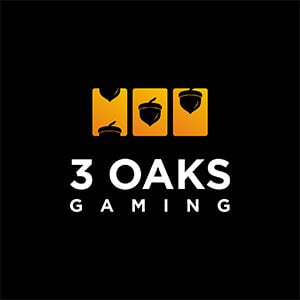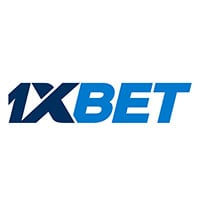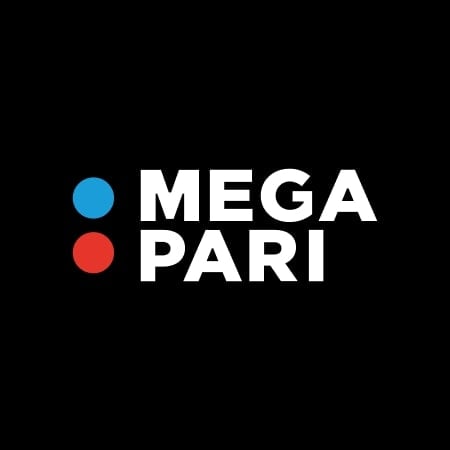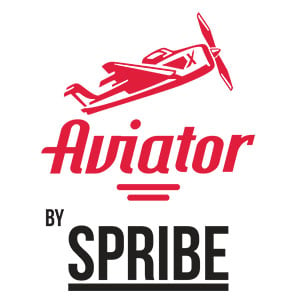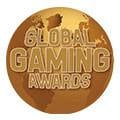ike the gaming market, innovation is alive and well in the lottery sector. Gambling Insider looks at the current state of the global lottery industry and what the future has in store
Lottery games have been around as long as the Great Wall of China. Quite literally. Keno slips from the Chinese Han Dynasty were thought to have helped finance many of the country’s great projects, including the Great Wall itself. Even Caesar was a fan, offering tickets to help repair the City of Rome, while the very first recognisable variant of lotto used people instead of balls. The Genoese used to bet on the names of Great Council members, five of whom would be drawn by chance; the pastime was so popular the candidates’ names were replaced with numbers and the modern draw-based lottery was born.
We’ll come back to the game that spawned this industry later, but for now it’s worth focusing on the humble scratchcard, or instant ticket, which has evolved into a behemoth that completely dwarves its forebear in terms of popularity and revenue. Indeed, over the last ten years, while revenue from draw games in Europe has grown by around $6bn, the instants market has increased by a staggering $26bn, and is by far the largest contributor to lottery operations worldwide.
The current poster boy of this vertical is Scientific Games’ new WILLY WONKA GOLDEN TICKET™ multi-state linked instant game. Offering an astonishing $1 billion prize, the idea came about following the equally seismic POWERBALL jackpot of $1.6 billion that was won in January 2016, according to SG’s Lottery Group Chief Executive, Jim Kennedy: “Our job is to make sure our customers have products that can match the excitement of previous offerings; at the end of the day they are government businesses that are required to return growth to their shareholders.
“Within days of the POWERBALL jackpot I gathered our team and explained that our customers are going to need something to talk about, something that can act as a tent pole to build their programmes around, so we thought this was the perfect time to bring out a billion-dollar linked game. It was driven by the needs of the market and our customers.”
The WILLY WONKA GOLDEN TICKET™ game is launching in a total of 11 US states, making it available to a population of more than 100 million with additional state lotteries still in discussions to add the game to their offerings. According to Kennedy, in the six states the game has already launched it has over-performed, often becoming the best-selling game at its price point. Kennedy states: “This game has this great amalgam of a great prize, and the known concept of a golden ticket which is rooted in the psyche of most people. And then it turns out that in our gaming business, our WILLY WONKA™ slots game has also been an enormous success, so there’s almost this zeitgeist around WILLY WONKA which has added to the momentum.”
With around 2,300 new instant games launched annually in the US alone, you’d think that this market would be reaching saturation. Apparently not, according to lottery expert Terri Markle, Publisher, La Fleurs Magazine: “There are several states that have not yet legalised lottery, and every year we watch the state legislators because slowly but surely they come around. In terms of growth of sales I don’t think it’s saturated, I think there are opportunities even on the brick and mortar side, where lotteries are able to expand if they can harness the technology on offer and get into the big box retailers and other outlets that don’t want to sell lottery because of the headache from the accounting issues.
“We’ve seen with some companies, like major convenience store retailer Wawa, that they would sell lottery but only if there was a self service solution. The vendors were able to step up and offer that, and the sales were so good they were able to expand from state to state. If you can provide the technology that retailers want and simplify their processes they will make money and it will be worth their while. At the moment all the lotteries are looking for ways to increase their footprint and be able to offer new types of retail locations.”
In fact, far from reaching saturation, the online instants market offers the potential for significant growth in future. Rhydian Fisher, CEO of digital instant gaming specialists IWG believes that the US, in spite of its restrictive online gaming laws, could prove fertile ground in the near future. “The industry is really focused on North America, because there is nothing from a federal law point of view stopping people playing lottery online, it’s just down to state law. At the moment, Kentucky, Georgia and Michigan all have an online offering, but I think the time is right; things move very slowly in the US but I think there will be other states that will join in. Online instants such as our Cashbuster game have been a massive success in Michigan for example, and in Canada we have just launched a physical Cashbuster ticket - it’s become such a big brand online that we’re launching it in the retail market.”
Kennedy agrees that there will certainly be growth in the digital lottery market, but also points out that the physical instant card is far from being scratched out. “It turns out that if consumers are given access to good games they will play them more in shops than they will on the internet at this point. Will that change in time? You have to think it will, but we certainly see the preference for the physical instant games borne out in the data now, even in places that have highly sophisticated online choices.
“Look at the growth in France, the UK, Italy, Portugal and Spain, instant games are still a healthy multi-billion dollar industry. These countries have improved the product and followed a lot of the best practices we established in the US, and consumers have responded positively. If you look at the UK market for example, Camelot’s scratch-off games sold at retail grew many times more in sales volume compared to its games offered on the internet.”
Dr Nick Papadoglou, Lotteries Group Director at gaming supplier and operator Intralot believes growth for lotteries lies in improving existing retail points and expanding to new channels: “Understanding the need of consumers not wanting to spend time in queues while shopping creates the need for a new generation of retail POS, while the implementation of digital technology in the retail environment is at a stage of guaranteeing secure online real-time transactions for the consumer, the retailer and the lottery.
“Even so, new technologies and mobility are entering the retail environment. In Europe, steps in that direction are evident while at the same time improving both the retailers’ and players’ experiences, since mobile devices have become the preferred all-in-one tool.”
He continues: “Addressing a ‘loose’ online legislation framework and non-regulated markets is becoming a pressing issue in maintaining a sustainable and responsible gaming environment. Everyone is familiar with fraud and the non-paid prizes phenomena in non-regulated markets. In Europe online gambling regulations are currently at the centre of an intense and polarised debate between those advocating for more restrictive, state-based policies and those who are seeking for the liberalisation of the European market.”
Joni Hovi, Executive Director, State Lottery Business at Kambi advises that embracing the digital side of lottery and sports betting will be essential in order to maintain a share of the gaming market. “The retail presence that they have in most of the jurisdictions gives them a slight lead in this race, and if state lotteries act on this strategic opportunity now, on digital channels they will be in a favourable position to compete on a level playing field against the private operators.
“Success with digital lottery varies and sports betting varies; if you look at the Nordic lotteries, they are in an excellent position. Other European countries like Austria and Italy are also managing this well, however there are other markets where they are significantly behind. Most lotteries however, are embracing this shift and recognise the importance of digital sales and new customer groups, they are starting to segment their customers and investing in new technologies, verticals and partnering with service providers -a vital step in the right direction to attract the younger demographics in particular.”
You would be forgiven for thinking innovation in the lottery sphere is hard to come by, given the restrictive nature of the legislation and the simple nature of fixed outcome games. According to Fisher, there are certainly opportunities to move the instant game on through interactivity and grouping players together for a more social experience. “At the moment it’s a very communal experience playing a draw game, syndicates in particular are very popular.
“If you can translate that kind of a social element to the instant experience then it could be successful. However I think there’s plenty of room for growth in this sector without needing to reinvent the wheel. If you look at the figures for online instants in every mature lottery in the world, just simple improvements in game speed and graphics are having a massive impact on sales.”
This idea of using popular trends in the gaming world and applying them to lottery products is something that iGaming platform provider Bit8 have attempted with their latest product. Lotto Hero is a mobile-friendly lottery game which gives players two chances an hour to win €1m, every hour, 24 hours a day.
CEO Angelo Dalli commented: “I think the sector has been held back by its own unwillingness to follow the trends seen elsewhere in the gambling industry. Suppliers need to think of alternative
and more forward-thinking ways to bring innovation to the vertical. Lotto Hero’s design takes its inspiration from popular, fast-paced, ‘spin-and-win’ casino games. It is a fresh, intuitive, and very engaging; something online lottery hasn’t really seen before.”
It’s not just lottery products themselves that are being innovated upon, as Markle explains: “Rather than targeting lottery-licensed retailers, lottery operators are currently exploring ways to get into stores with a gift card. The lottery gets a high price point because it’s going to be 40-50 dollars for the gift card and then the customer can take that to any retailer at their leisure when they want to buy the product. There’s already been some tests with the Pennsylvania and Ontario lotteries and we’re currently waiting for the results.”
In the US, the draw systems companies are under pressure to maintain sales performance in the face of the big bloc lottos such as Powerball, which are by their very nature volatile in terms of jackpot and therefore customer interest. Instants offer a more reliable revenue stream, so the need to inject new life into this format has led to the introduction of the instant terminal game.
Utilising their existing draw game terminals to vend instants has led to some significant sales successes, according to Markle: “When they’re able to have a higher price point, a higher prize payout and add a progressive feature, those tickets are really big sellers. The best example is the Ohio lottery; their sales are incredible, with $117m in 2016 through their EZPlay offering, sales up 9% and another $9m through a new product called QuicKenoEZPlay.They also have standalone machines called EZplay Tap which are ideal for pubs, taverns and fraternal orgs which generated a further$30m last year. It totals over $150m a year, that’s a big hit for the lottery industry.
“That’s where the attention of the lottery industry is at right now. They’re looking to create niche products that are successful enough to satisfy players, offer novelty and continue to use the terminal assets they already have to generate more sales.”
As with all segments of the gaming industry, some lottery operators are looking at ways of attracting and retaining the next generation of players. But are Millennials really worth chasing as a customer group? Kennedy isn’t so sure: “All of our research across US and Europe confirms it’s not a psycho-demographic issue, it’s really a spend issue. We’ve done some pretty deep segmentations and the motivations for a 21-year-old playing a scratch game are the same as those for a 37-year-old player. The only difference is the 37-year-old has disposable income! Having said that, we all know the way you relate to any consumer product is formed in your 20s, so that’s why engaging interactive promotions and especially the philanthropic purpose of a lottery are very attractive to that generation. We think it forms a sort of the magic triangle, this connectionbetween the lottery and good causes, and using mobile devices as a way to link to the retail product.”
Fisher agrees: “Online instants don’t necessarily appeal to 18 year olds, nor would the jurisdictions want them to, but they do appeal to customers at a certain life stage and that is being replenished, sales are growing everywhere we’re live. Younger people play these games than lottery but not necessarily young. Most people see it in simplistic terms in that Millennials play these sort of skill and casual games online therefore it should be something we offer. If you want to play Angry Birds, you are better off playing Angry Birds and not some bad variation of it.”
There is evidence to suggest that younger players are taking an interest in lottery, and as Dalli suggests, operators should seize the opportunity: “It’s imperative that lottery continues to develop new products that are attractive not only to Millennials, but to all online and mobile players as it can be a very effective cross-sell tool for operators. If suppliers such as ourselves are able to create exciting and engaging lottery products, you can be sure that the audience will continue to grow among a much wider demographic.”
For European operators, the potential revenue to be gained from adding a sports betting offering is not to be ignored, and could even provide a draw for the Millennial players according to Dr Papadoglou: “Surveys mention that sports, either eSports or clear-cut betting are attracting the younger player segments from all sectors in the industry. In eSports alone, the percentage of players from younger demographics reaches a stunning 70% and lotteries should be inspired by this offering and move forward to include sports betting, leveraging their wide and well-established retail network. By embracing sports betting as part of their product portfolio offering, lotteries can reduce player churn despite the jackpot fatigue of the existing market segment, while by cross-selling keep a substantial share of the wallet from the younger, newer player segments.”
It’s not a simple task in a tightly regulated market largely made up of government-owned organisations; even without the legal and regulatory handcuffs, the pace of change in the public sector can be glacial. “Sports betting is not really seen as core business for many of the lotteries in Europe,” explains Hovi.
“In that sense there has been movement and changes slowly moving forward in Europe if you look at the re-regulation in the Netherlands and Germany, but they still haven’t crossed the finish line and there are still a few questions they need to determine before the licensed model kicks in. The bigger problem is that there are some lotteries that are considering dumping sports betting and I think that’s the first mistake, this gives private operators more and more power and market share.”
The issue also lies in the inherent complexity of sports betting compared to the relative simplicity of lottery. Hovi continues: “In sports betting you have so many different variables and elements you have to consider, from sports integrity to risk management. If at the lottery operator you don’t have enough expertise on sports betting to discuss and explain the opportunity that it could bring then its potential can be ignored.”
The Nordic regions seem to be ahead of their European neighbours in this respect, with the state-owned monopolies already offering sports betting alongside their other lottery products. In Sweden for example, state-owned SvenskaSpel is bolstering its portfolio with the addition of eSports as it prepares for the re-regulation of the market, which is expected to come into force in the next year or so.
Dalli believes that before lotteries embark on a risky portfolio expansion they need to bring their bread-and-butter revenue streams up to scratch first. “What the Swedish example shows is the need to innovate and move the offering to the next level. If your offering stands still so will your revenues. My own view is that lottery could do so much more to improve its own core offering before it starts bolting on additional products and services. At the moment it is rarely getting that right, particularly online. It’s an obvious thing to say, but it is so important to offer your customer what they want, not what you’ve got.”
The Landscape of Lottery
L
By Doug Peck
Premium+ Connections
Premium Connections
Consultancy
Awards
Executive Profiles
Mohegan
Mohegan Inspire
GAN
DraftKings
The Star Entertainment Group
Follow Us
Company profile: Growe Partners
Dominate the Sports Betting Affiliate Arena with Growe Partn...Company profile: GR8 Tech
The sportsbook provider discusses turning sportsbooks into a...Analysing sports betting data from the African Cup of Nations 2024
Sports betting supplier Betby provides Gambling Insider with...LiveScore Group: Football’s changing relationship with fans
Gambling Insider delves deeper into LiveScore’s Evolution...9 April, 2024
A new trend: Why are gaming companies going private?
9 April, 2024










